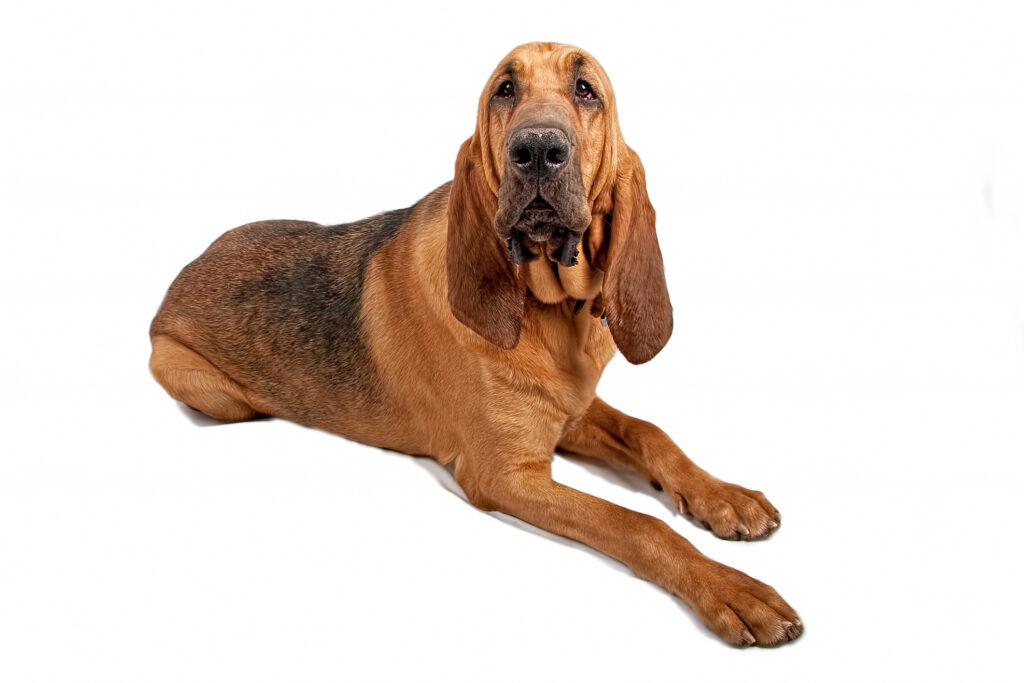Bloodhound
The bloodhound originated in Belgium around 700 A.D., where they were bred at St. Hubert monastery by Catholic monks and bishops to hunt wolves and deer. Their name means “blooded hound”, in reference to their pure blood and the care that was taken to keep their lineage that way. They are large dogs that can grow to over 100 pounds. Their fur coats come in black and tan, liver and tan, or red. Although they appear to be lazy and miserable, bloodhounds are working dogs, and they have the strongest noses of any dog breed, with over 300 million scent receptors. It’s estimated they are able to smell three million times better than humans do, and are so reliable their evidence is able to be admitted into a court of law. Everything about them is designed to help their tracking skills. Their ears drop to the ground and scoop the scent upward and the loose skin on their face and neck helps to retain the scent. You may find it difficult to pull a bloodhound off a trail before he finds his quarry. They are the perfect tracking dog. Today they can be used to hunt other small animals, just like their scenthound cousins, but they are also employed to find people who are missing, such as children who have gotten lost. They can be found working as police dogs to find criminals who have escaped from prison or suspects who are on the run. If living with a family, the bloodhound will either need a job to do or some kind of daily exercise, like a long walk or run to a place where he can use his sniffer. Otherwise, he won’t be satisfied at the end of the day and might misbehave. A tired dog is a good dog. Be sure that you keep him on a leash though, as he is relatively independent and has the potential for wanderlust.


